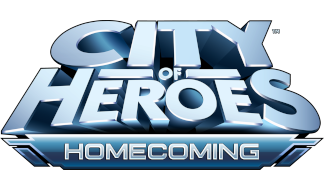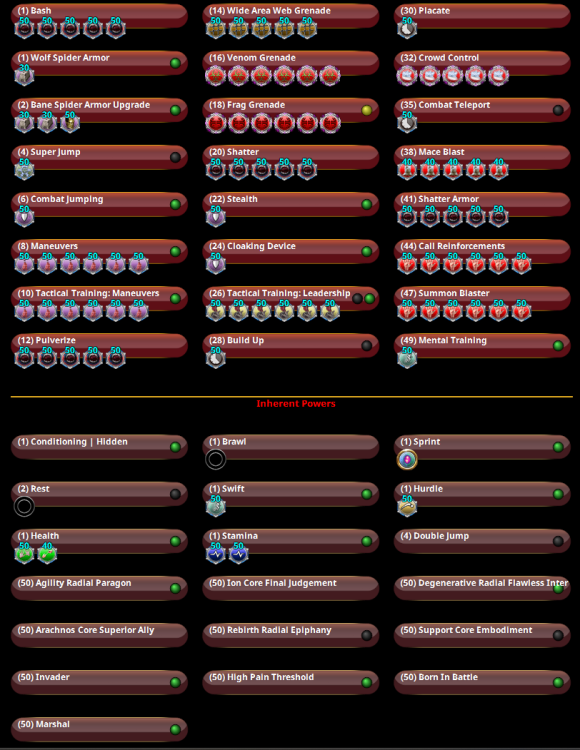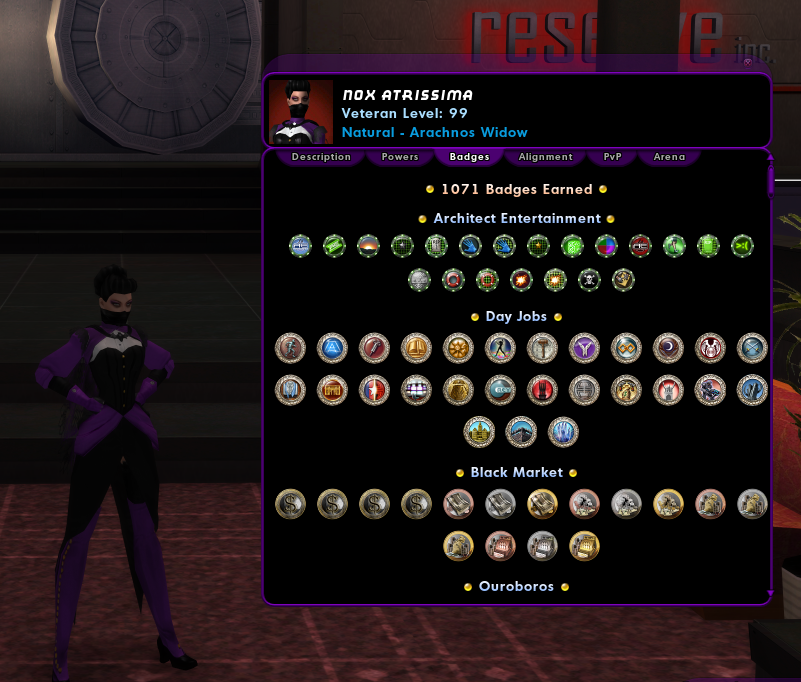
Burnt Umber
Members-
Posts
440 -
Joined
-
Last visited
Content Type
Profiles
Forums
Events
Store
Articles
Patch Notes
Everything posted by Burnt Umber
-
No problem! I'm glad it's fun and works for you.
-
I'll try to bring Horrere - Sonic/Cold Corr.
-
I'm fond of mine. It's a bit of a hybrid of everything has the Huntsman rifle grenade powers for AoE, some pets, and the mace melee attacks. It doesn't burn through endurance. Although it has a few expensive pieces, I don't really go wild here. It's effective in both solo and team play. It also exemplars well mostly (it's a little anemic before lvl. 20 admittedly). VeneficioHybrid.mbd
-
Oh, you mean that effect! I have no idea. I was using soul-noir themed Dark Miasma so maybe from petrifying gaze?
-
I think those are the special effects of the Overwhelming Force Damage/KB>KD Proc? If I remember right, it has some special visual effect to go off randomly. I think it's fireworks?
-
Add the option to Revoke Anniversary Mini Pets
Burnt Umber replied to Divi's topic in Suggestions & Feedback
I too would like a way to get rid of them. I wouldn't have gotten them otherwise, and I certainly would prefer not to have them clogging my characters' power lists. -
It not the highest number out there but I'm pretty please with my Villain-only badging progress. Have 1071 so far, with only PVP, Achievements, and a smattering of others left.
-
I hope to bring Hiemps - Storm/Ice Blaster.
-
Hey all, it occurs to me that, if people are up for it, we could do some Redside time capsule hunting after the LRSF. A team seems to really make getting the associated badges for the event a bit easier.
-
I think I'll bring Hostia Usta - Fire/Dark Corr.
-
Neat! Would Necromancy fit here? Or is it just "Dark ___ " powersets?
-
I'll try to bring Gelida Obscura - Ice/Time Corr.
-
I think the trick with VEATs is that much of their power comes from being a passive force multiplier on teams with non-obvious powers. That is to say, powers like Tactical Training: Maneuvers should be taken as soon as possible and also stacked with the normal Leadership: Maneuvers pool power. Similarly, Mask Presence and Foresight are quite good defensive powers and benefit from being slotted as such. Mind Link is another great defensive power but it can have a long recharge; I use it as a pre-fight buff when things look tough rather than this forum's commonly held belief that you should try to make it "perma." From there, things vary depending on which path you take. A Night Widow will feel a bit like a pre-revamp claws/super reflex stalker with a bit of Willpower mixed in (the new Pain Tolerance power is a nice addition in this regard). Mask Presence is particularly valuable because it provides you with the "Hidden" status as Hide does on stalkers. Slash operated like you "Assassin's Strike" power and build-up/placate operate as your critical strike management tools. Placate also helps manage aggro and has a relatively quick recharge. Spin also crits from hide so it can be a great opener rather than the single target powers. (It should be noted that spin can have a heavy endurance cost so it can leave you drained if used too frequently or is under-slotted.) A ranged Fortunata is sort of like a cross between Mind/Psionic dominator and a Psychic Blast/Willpower sentinel. You have primarily have ranged psychic blast attacks and mind control powers. I paired mine with Soul Mastery and have an attack chain of Soul Tentacles > Psychic Scream > Psychic Tornado > Dark Obliteration. I also get to use Psychic Wail as a nuke when I can. Other than that, Scramble Thoughts is now a potent DoT psychic attack that will stun even bosses (it's MAG 4). Dominate/Total Dominate work as as holds for more traditional lock down powers (dominate is also a good damage/proc-bomb power but I personally don't slot it as such). Aura of Confusion is a melee AoE version of Mass Confusion, so it can be a very useful power too. A Fortunata-Widow hybrid (i.e., a Fortunata that uses the melee claws powers) is a combination of both of the above. You draw on the base Blood Widow powerset and can mix in the Fortunata powers. As such, it can vary a bit depending on which powers you take and how you slot them. However, it can be particularly nice to chain Aim > Follow-Up > Psychic Wail to clear spawns near effortlessly. I hope this helps a little. I've also attached my current builds for mine as examples, but they are by no means perfect. NoxWidow.mbd NoxFortunata.mbd NoxHybrid.mbd
-
It's no problem! I honestly have a bit of inf. banked, so I'm happy to help if folks want to upgrade their builds or to respec them before this weekend.
-
Oh, if anyone needs some inf. for a build for this weekend, send me a line in game and I'll send a sum along.
-
I'll bring Nox Atrissima
-
I'll try to bring Super-Radiance - Kin.Energy Defender.
-
Ah, okay! Thanks for clarifying.
-
I'd like to bring Kataigis - Elec./Storm Controller. But could you please clarify on what "Be your original self" means here?
-
I'll bring Umbrifer - Dark/Elec. Brute.
-
I'll bring my Crab Spider Veneficio in his my Night Widow Nox Atrissima in her native Arachnos Costume (does that work for the theme?).
-
I'll try to be there next week (on time maybe?) with Caelum - Elec./Eng. Blaster.
-
At the risk of being a bit brazen, I believe that article - a player's guide - is mistaken. I can't recall having Bodyguard working without my henchmen following me; I also don't recall the actual Developers describing it as working that way, with the Patch Notes themselves saying that henchmen have to be in Defensive Follow.
-
Although I understand the OP's frustrations, I'm not a fan of the suggestion because it would mean that pets would not be summoned in Bodyguard mode. The reason they summon to the default stance of Defensive Follow is for them to be in Bodyguard mode; it has been that way since Bodyguard mode was introduced. The OP's suggestion would mean that the MM is more squishy when (re-)summoning pets rather than more protected.
-
Looking at the build, it seems like you are frequently breaking your sets to frakenslot more expensive sets into the mix or over-/underslotting things with expensive uniques. I think that might be contributing to your "muddied" feel. Some of that might be fixed by taking more essential powers sooner, and reallocating slots from passives to you active powers. For example, you take aim early on and 4-slot it with Gaussian's, but leave the more important TT: Maneuvers until the 40s - even though it's a core power to your defense - and underslot it. I'm not sure I fix your problem and it certainly isn't perfect, but here's a revised version of yours: Crab 2024 revised.mbd






